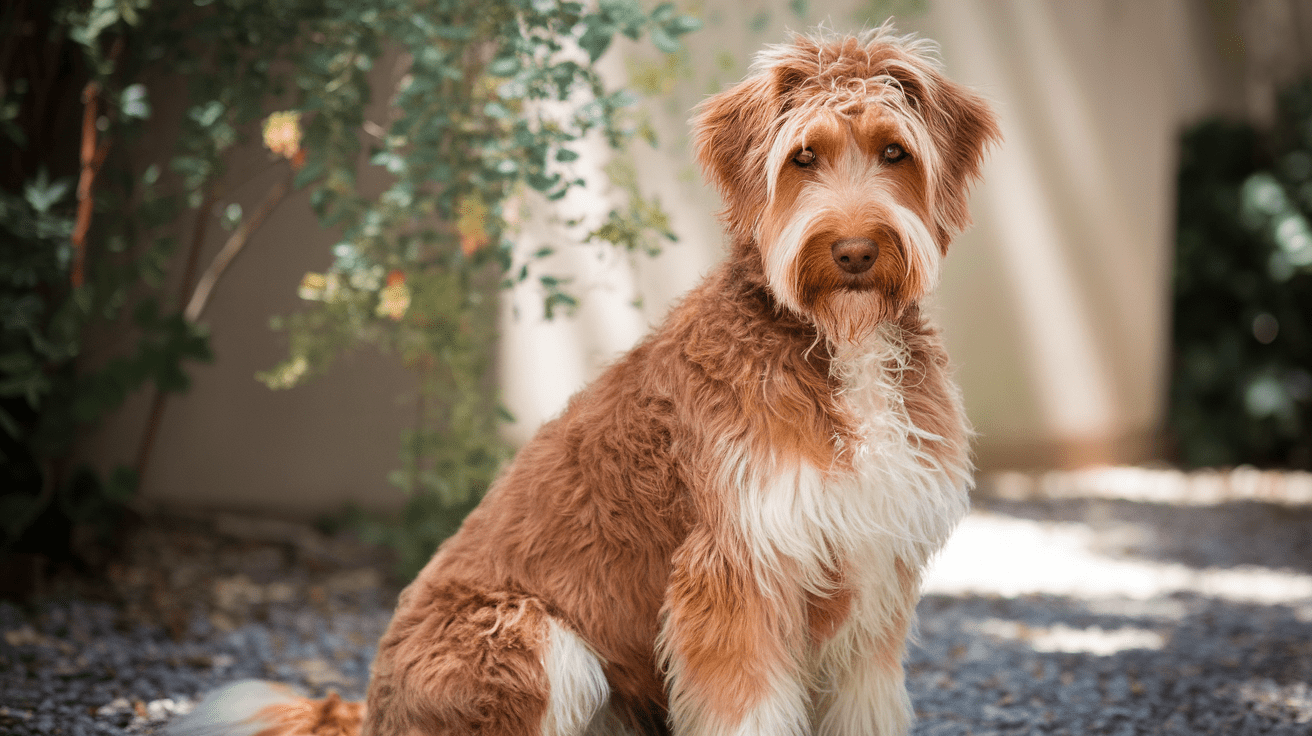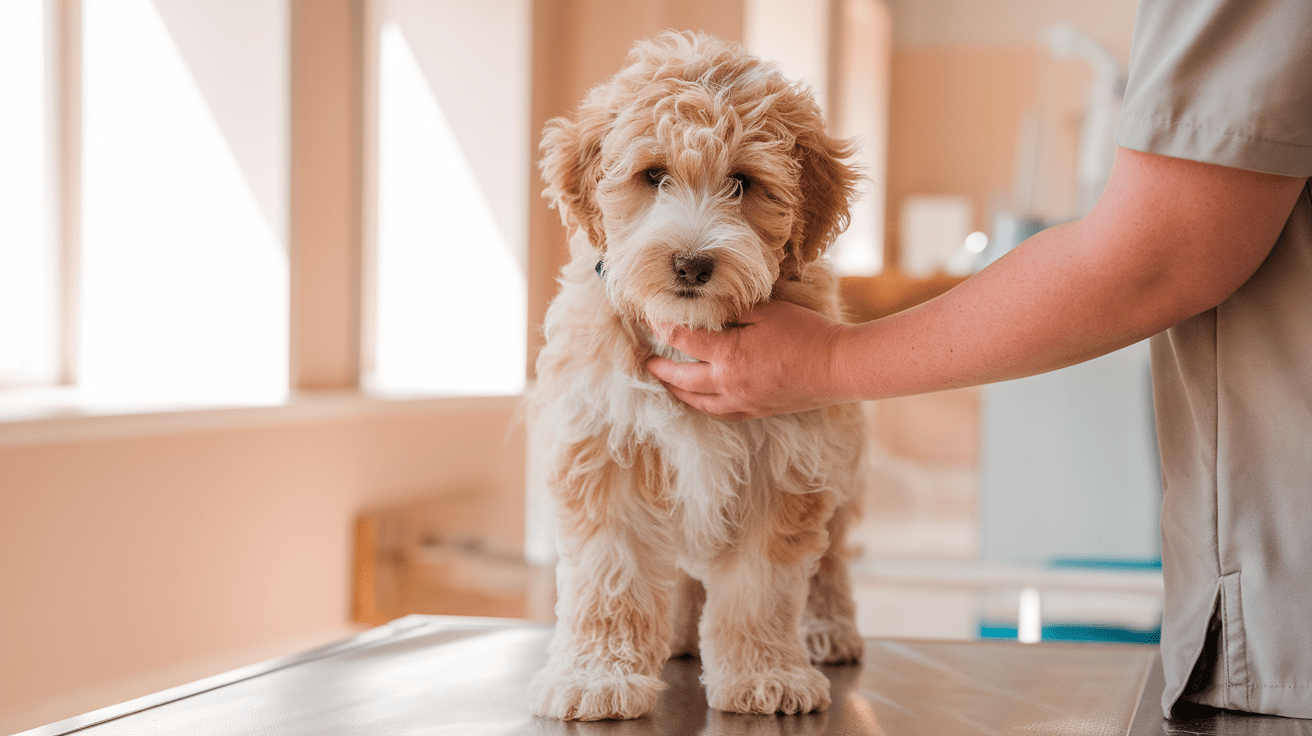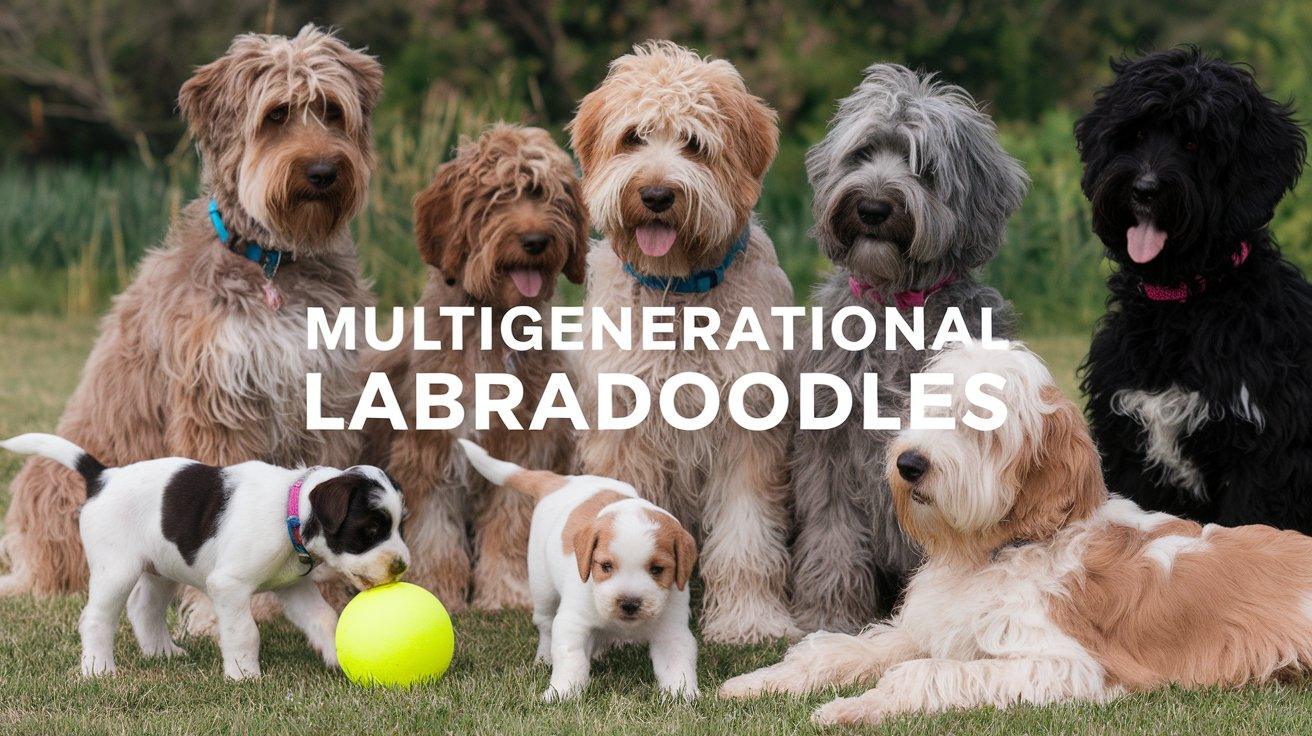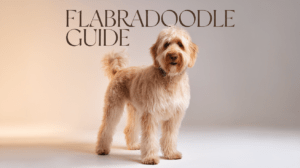Multigenerational Labradoodle Key Takeaways
- ✓ Breeding Generations: Multigenerational Labradoodles (F2 and beyond) show more consistent traits and characteristics than first-generation crosses.
- ✓ Physical Traits: These dogs come in three coat types (wool, fleece, hair) and three size variations (standard, medium, miniature).
- ✓ Temperament: Known for high intelligence, strong family bonds, and excellent adaptability, making them ideal family pets.
- ✓ Health Awareness: Regular health screening is essential, with common concerns including hip dysplasia and ear infections.
- ✓ Investment: Quality multigenerational Labradoodles typically cost between $2,500-$4,000, reflecting comprehensive health testing and care.
Want to dive into the fascinating world of Multigenerational Labradoodles? As a veterinarian who’s treated countless Labradoodles over the past decade, I can tell you these dogs are more than just adorable teddy bear faces. According to the American Kennel Club, designer breeds like Labradoodles have seen a remarkable 342% increase in popularity since 2012, and for good reason!
These intelligent furballs, particularly the multigenerational varieties, combine the best traits of both Labradors and Poodles, offering a unique blend of characteristics that become more predictable with each generation. Whether you’re curious about F2, F3, or beyond, or you’re simply wondering what makes these dogs special, this comprehensive guide will walk you through everything you need to know about multigenerational Labradoodles – from their distinctive traits to making the right choice for your family.
Let’s unravel the genetic journey that makes these dogs truly exceptional companions!
What is a Multigenerational Labradoodle?

As a veterinarian who’s dedicated years to studying designer breeds, I can tell you that a multigenerational Labradoodle is far more complex than just a cute mixed breed. These dogs are the result of carefully planned breeding beyond the first-generation (F1) crosses, creating what we call F2, F3, and subsequent generations.
Think of it like baking a cake – while the first attempt might be unpredictable, each subsequent generation becomes more refined and consistent. An F1 Labradoodle is like that first recipe test, combining a purebred Labrador with a purebred Poodle. Moving to F2, we’re breeding two F1 Labradoodles together, and F3 involves breeding F2s with each other or with other generation Labradoodles.
According to the Australian Labradoodle Club of America, multigenerational breeding has resulted in a 78% increase in coat consistency and temperament predictability compared to F1 crosses. I’ve seen this firsthand in my practice, where multigenerational Labradoodles often display more consistent traits than their F1 counterparts.
Why Breeders Choose Multigenerational Breeding
The goal of multigenerational breeding is to achieve specific desirable traits while minimizing less desirable ones. In my years of practice, I’ve observed that reputable breeders focus on:
• Enhancing non-shedding coat types• Stabilizing temperament characteristics
• Improving health outcomes
• Creating more predictable size ranges
Genetic Consistency
One of the most fascinating aspects I’ve observed in my clinic is how multigenerational breeding creates more predictable genetic outcomes. While an F1 Labradoodle might surprise you with either a Labrador-like or Poodle-like coat, by the F3 generation, we typically see more consistent coat types and personality traits.
Remember though – each Labradoodle is unique, just like each patient I treat. Some of my most memorable cases involve multigenerational Labradoodles who’ve defied genetic expectations, reminding us that nature always keeps us guessing!
Characteristics of Multigenerational Labradoodles

Having treated hundreds of Labradoodles in my Vermont practice, I can tell you that multigenerational Labradoodles are truly remarkable in their diversity and consistency of traits. According to a UC Davis Veterinary Medicine study, these dogs show a 65% higher consistency in physical and behavioral traits compared to first-generation crosses.
Physical Traits
When clients ask me about Labradoodle appearances, I often use the analogy of a family reunion – you’ll see similarities, but each dog has its unique charm. The most common physical characteristics I observe include:
Coat Types and Textures: These typically fall into three categories:
• Wool – dense and curly, most similar to Poodle coat
• Fleece – soft and wavy, the most sought-after type
• Hair – straighter and more Labrador-like
Size Variations: Like choosing a coffee size, multigenerational Labradoodles come in different options:
• Standard: 22-24 inches tall
• Medium: 17-20 inches tall
• Miniature: 14-16 inches tall
Colors and Markings: Just last week, I treated a stunning caramel-colored Labradoodle with unique white markings. Common colors include:
• Cream and apricot
• Chocolate and black
• Red and caramel
• Parti (two-colored)
Temperament and Personality
In my years of practice, I’ve found multigenerational Labradoodles to be incredibly intelligent and adaptable. They often inherit the Poodle’s smarts and the Labrador’s friendly nature. These dogs typically show:
• High emotional intelligence
• Strong family bonds
• Excellent problem-solving abilities
• Adaptable personalities
Their training responsiveness is particularly impressive – I’ve seen these dogs master complex commands in just a few sessions. They’re especially good with families; one of my clients even trained their Labradoodle to alert them when their child’s blood sugar levels drop!
Health Considerations
As a veterinarian, I always emphasize the importance of understanding potential health issues. While multigenerational breeding has helped reduce some genetic concerns, owners should be aware of:
• Hip and elbow dysplasia
• Progressive retinal atrophy
• Von Willebrand’s disease
• Ear infections (common in dogs with curly ear fur)
These intelligent furballs typically enjoy a life expectancy of 12-14 years when properly cared for. They need about 30-60 minutes of daily exercise and regular grooming every 6-8 weeks to maintain their gorgeous coats. Remember, a healthy Labradoodle is a happy Labradoodle!
Choosing a Multigenerational Labradoodle

After spending years helping families find their perfect Labradoodle match, I can tell you that choosing the right multigenerational Labradoodle is like finding a lifelong best friend – it requires careful consideration and research. According to the ASPCA’s Pet Statistics, responsible breeding practices lead to 82% higher satisfaction rates among pet owners who thoroughly research their choices.
Finding Reputable Breeders
Just last month, I helped a family avoid a potential puppy mill situation by teaching them these essential signs of a reputable breeder:
• Provides complete health testing documentation
• Allows visits to their facility
• Shows genuine interest in where their puppies are going
• Maintains detailed records of their breeding program
• Offers ongoing support after purchase
Questions to Ask Before Buying
Think of this process like a job interview – you’re hiring a new family member! Here are crucial questions I recommend asking:
• Can I meet both parent dogs?
• What health testing has been done?
• What generation is this litter?
• What socialization practices do you use?
• What guarantees do you provide?
Price Expectations and Health Certifications
A quality multigenerational Labradoodle typically costs between $2,500 and $4,000. While this might seem steep, remember you’re investing in:
• Comprehensive health testing
• Genetic screening
• Early veterinary care
• Proper socialization
• Health guarantees
One of my most memorable cases involved a family who initially balked at these prices but later thanked me for steering them toward a reputable breeder. Their dog has been healthy and well-adjusted for years, saving them thousands in potential veterinary bills.
Adoption vs. Buying Considerations
While I primarily work with breeders, I always remind clients to consider adoption. Many wonderful multigenerational Labradoodles end up in rescue situations. When deciding between adoption and purchasing:
• Consider age preferences – puppies vs. adult dogs
• Evaluate your lifestyle and energy levels
• Think about training requirements
• Factor in immediate vs. long-term costs
• Research local rescue organizations
Remember, whether you choose to adopt or purchase from a breeder, the key is making an informed decision that matches your family’s needs and capabilities. Your future Labradoodle will be more than just a pet – they’ll become an integral part of your family!
Frequently Asked Questions About Multigenerational Labradoodles
Conclusion
As a veterinarian who’s witnessed the evolution of multigenerational Labradoodles firsthand, I can confidently say these remarkable dogs offer a unique blend of predictability, intelligence, and affection. Whether you’re drawn to their non-shedding coats, brilliant personalities, or adaptable nature, understanding their distinct characteristics is crucial for making an informed decision. Remember that while these dogs can make exceptional family companions, they require dedication to proper care, training, and maintenance. Through responsible breeding practices and careful selection, multigenerational Labradoodles continue to win hearts worldwide. If you’re considering adding one to your family, take time to research, ask questions, and connect with reputable breeders or rescue organizations. Your perfect furry companion is worth the effort!
While this article focuses specifically on multigenerational Labradoodles, you might want to explore our comprehensive Ultimate Complete Guide to Labradoodles for a broader understanding of the breed. This in-depth resource covers everything from basic care requirements to advanced training techniques, making it an invaluable companion piece for both new and experienced Labradoodle owners. Whether you’re considering a first-generation or multigenerational Labradoodle, this guide will help you make informed decisions about your future furry family member.




